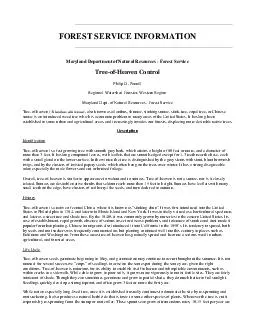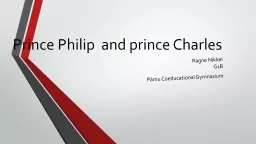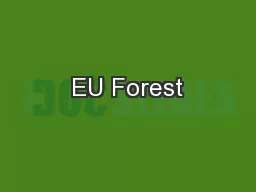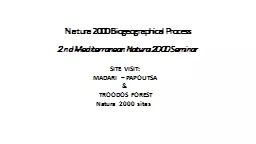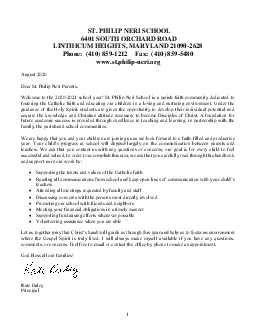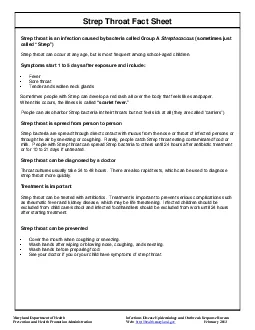PDF-FOREST SERVICE INFORMATION Maryland Department of Natura l Resources Forest Service TreeofHeaven
Author : pasty-toler | Published Date : 2015-01-16
Pannill Regional Watershed Fore ster Western Region Maryland Dept of Natural Re sources Forest Service Treeofheaven Ailanthus altissima also known as ailanthus s
Presentation Embed Code
Download Presentation
Download Presentation The PPT/PDF document "FOREST SERVICE INFORMATION Maryland Depa..." is the property of its rightful owner. Permission is granted to download and print the materials on this website for personal, non-commercial use only, and to display it on your personal computer provided you do not modify the materials and that you retain all copyright notices contained in the materials. By downloading content from our website, you accept the terms of this agreement.
FOREST SERVICE INFORMATION Maryland Department of Natura l Resources Forest Service TreeofHeaven: Transcript
Pannill Regional Watershed Fore ster Western Region Maryland Dept of Natural Re sources Forest Service Treeofheaven Ailanthus altissima also known as ailanthus s humac stinking sumac stinktr ee copal tree or Chinese sumac is an introduced weed tr. Moore's Driving Academy is proud to present the Basic Driver's Education Course for all those needing their driver's license. We are so proud that we will be offering a reduce tuition for the December class. If you come in and pay the tuition by, November 28, 2014, your cost will only be $325.00. Our office hours are 5pm to 7pm during the week day and by appointment on the weekend. The Maryland Department of Natural Resour ces and its shooting range committee have come a long way in our efforts to expand shooting opportunities in Maryland Grants totaling 165000 have been awarded to 44 priv ate and public ranges throughout the 1. 2. New Maryland Waiver. Five year demonstration program. State of Maryland and CMS signed agreement in January 2014. Allows Maryland to continue setting hospital reimbursement rates for all patients. Ragne Nikkel. G1B. Pärnu Coeducational Gymnasium. Prince Philip, . Duke . of Edinburgh. Born. : . 10. .. June. .. 1921. as. Prince Philip of Greece and Denmark. .. Family: . his . mother . was . Princess Alice of Battenberg. Science Fiction Film Festival . will be a huge success… a success we want you to become a part of!. With our strategic partnerships, connections, . raving fan bases, and line-up of talented entertainment … . The period of time during which monarchs of western Europe had . absolute control . over their national governments and societies.. B. What is the Divine Right Theory?. The theory that stated that monarchs had a . Strategy. . supporting. . multifunctional. . forests. Dan Burgar . Kuželički. Unit. “. Environment. , . Forestry. and . Climate. . Change. ”. DG Agriculture and Rural Development. . International Conference . Joshua M. Sharfstein, MD. Andrea C. Gielen, ScD. October 26, 2016. About the Presenters. Andrea C. . Gielen. . is a Professor in the Department of Health, Behavior, and Society at the Johns Hopkins Bloomberg School of Public Health the Director of the Johns Hopkins Center for Injury Research and Policy. Considered one of the foremost public health experts on injury prevention in the country, she is the author of more than 125 scientific publications, has served as President of the Society for Advancement of Injury and Violence Research and received the Award for Excellence from the American Public Health Association. . Presents. In celebration of the . 27th anniversary of the Americans with Disabilities Act. , the . Maryland . Department of Disabilities . hosted . a traveling . disAbility. History Tour throughout Maryland during July and August of 2017. . Growth. SECRETARY KELLY M. SCHULZ. MARYLAND DEPARTMENT OF LABOR. DECEMBER 11, 2018. Improving Maryland’s Workforce. 2. Since January 2015, total employment in Maryland has increased by 101,500 jobs. . . 2nd Mediterranean Natura 2000 Seminar. . SITE VISIT:. Madari. – . Papoutsa. . &. . Troodos Forest . Natura 2000 sites. . Where are we going?. Limassol. Larnaca. Nicosia. Madari. - . 16401 SOUTH ORCHARD ROADLINTHICUM HEIGHTS MARYLAND 21090-2628Phone 410 859-1212-5480wwwstphilip-neriorgAugust 2020Dear St Philip Neri ParentsWelcome to the 2020-2021school year St Philip Neri School Strep Throat Fact SheetStrep throat is an infection caused by bacteria called Group A Streptococcussometimes just called 147Strep148 If you have questions please contact the Provider Enrollment Helpline at 1-8444MDPROV 18444637768Monday 150 Friday from7am 150 7pmPlease upload this formto the 147Additional Information148 section und
Download Document
Here is the link to download the presentation.
"FOREST SERVICE INFORMATION Maryland Department of Natura l Resources Forest Service TreeofHeaven"The content belongs to its owner. You may download and print it for personal use, without modification, and keep all copyright notices. By downloading, you agree to these terms.
Related Documents

